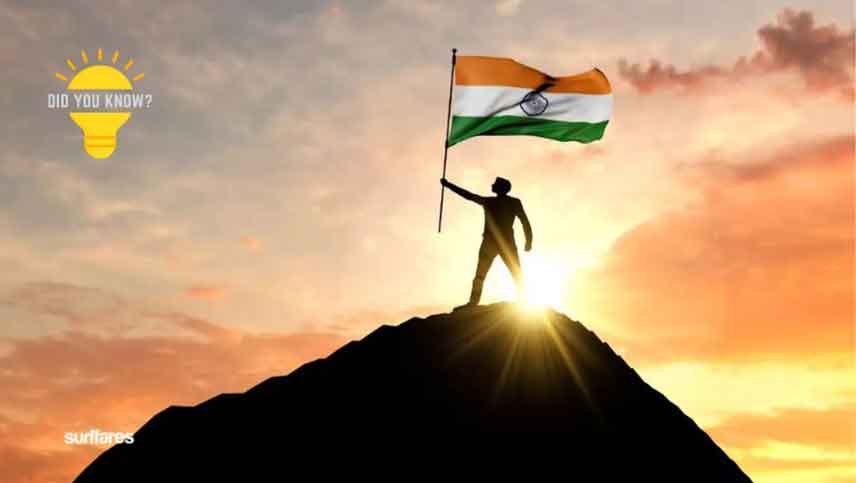
India is now prepared for its 77th Independence Day celebration with the Amrit Kaal. As always, PM Modi will host the flag at Red Fort and address the nation. As in previous years, the ‘Har Ghar Tiranga campaign’ was launched to motivate citizens to display flags at their homes. Besides that, it will depict the struggle’s history and its significance to the next generation. Let’s check out 10 Interesting Facts About India’s National Flag.
10 Important Facts About India’s National Flag
1) The first Indian flag was flown on August 7, 1906, in Kolkata’s Parsee Bagan Square. Moreover, the primary colors of the flag at that time red, yellow, and green.
2) In 1931, the tricolor flag was officially declared to be our national flag by a historic resolution. This saffron, white, and green flag had a picture of Mahatma Gandhi’s spinning wheel in the center.
3) The Indian Tiranga, adapted from the Ashoka chakra from the Ashoka monarch’s lion capital, was formally adopted on July 22, 1947.
4) Previously, Indian nationals could only hoist the flag on special occasions. This changed when Naveen Jindal’s ten-year legal battle ended on January 23, 2004, with a historic Supreme Court ruling.
5) In 2004, the Supreme Court of India ruled that Article 19(1)(a) of the Indian Constitution recognizes a citizen’s right to fly the national flag in good faith and with freedom.
6) In 1904, Sister Nivedita, a follower of Swami Vivekananda, created India’s first national flag.
7) Rabindranath Tagore wrote “Bharoto Bhagyo Bidhata” in 1911, which was later renamed “Jan Gan Man.”
8) According to reports in the media, only one location produces the Indian flag.
9) The Tiranga, or Tricolor contains three colors, with saffron on top denoting the nation’s fortitude and strength. In addition, the color white symbolizes truth and tranquility. Similarly, the color green at the bottom depicts the land’s fertility, growth, and good fortune.
10) In addition to India, five other nations also celebrate their independence. The Republic of Congo, South Korea, North Korea, Liechtenstein, and Bahrain are among these nations.
Independence Day
On August 15th, 1947, after 200 years of struggle against British rule, we, the citizens of India, declared independence from foreign rule. After this, India became the largest democracy in the world.
Furthermore, the whole country is busy with preparations for this day. Likewise, every State/UT has put all the possible security arrangements to prevent any uncertainty. The national capital prepared to make this day memorable once more with all the decorations and populace enthusiasm.
On Independence Day, PM Narendra Modi, who is famous for wearing unique headgear and costumes. Additionally, they will hoist the national flag from the venerable Red Fort and then address the nation.
The ‘Har Ghar Tiranga’ campaign, part of the Azadi Ka Amrit Mahotsav (AKAM) effort, is set to take place across the country from August 13 to 15. Hence, the initiative attempts to encourage people to proudly fly the national flag at home.
Conclusion
As we celebrate our 76th Independence Day, it is critical to remember the sacrifices and struggles that led to our freedom. Moreover, this annual occasion serves as a poignant reminder of our nation’s journey and the unwavering spirit that led to our liberation. So, let’s remember those who fought bravely and celebrate the progress we have made since. This day is a reminder of our collective responsibility to uphold the principles of democracy, equality, and unity. As we move forward, let’s continue to contribute to a brighter future for India. Happy Independence Day!
Book Your Flight to India – Discover 10 Fascinating Facts About the Indian National Flag This Independence Day! 🇮🇳✈️













